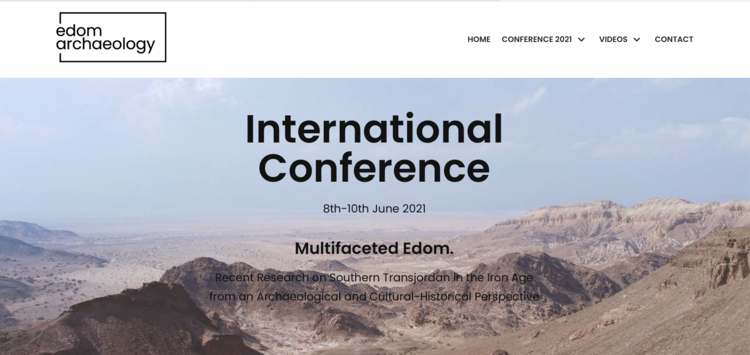Archaeological Conference
Archaeological Conference
Multifaceted Edom.
Recent Research on Southern Transjordan in the Iron Age
from an Archaeological and Cultural-Historical Perspective
8th-10th June 2021
The region of Edom in Southern Transjordan played a key role in the early to middle First Millennium BCE, especially in the Iron Age II period, and – as most recent research suggests – already in the early Iron Age I. Edom was strategically positioned alongside well frequented trade routes leading from the North to the South, and from the East to the Western regions of Southern Levant and the Mediterranean – thereby connecting different cultural, political and economic zones. The presence of Edomite trade in the respective regions is very well documented in epigraphical and archaeological sources.
Interest in the archaeology and history of Southern Jordan during the First Millennium BCE started in the 19th century and then accelerated in the middle of the 20th century. The history of the exploration is long and certainly multifaceted since it was strongly connected to the search for the ancient sites relating to the events and peoples mentioned in the Bible. Despite a long history of research, the archaeological coverage of Edom still remains fragmentary, as large areas have not been surveyed, and others have provided data that are not stratigraphically controlled.
Only a few sites have been excavated, and even fewer have been published in final form such as, e.g. Tawilan, Busayra and Umm al-Biyara; others, such as e.g. Baja III, have been presented in the form of articles, reports and overviews. It is therefore difficult to provide a comprehensive overview of the sites and finds. Moreover, major questions such as the precise chronology of the sites have not yet been sufficiently resolved.
The archaeological record shows itself as quite complex. The settlement patterns are diverse and highly flexible. This most probably results from more uncertain conditions directly related to socioeconomic factors. Yet the different forms of land-tied tribalism, the degree of centralized political rule and level of urbanization are still a matter of discussion. Additionally, the traditional view, that the kingdom of Edom only came to existence from the 8th century onwards, seems to be challenged in the light of recent findings.
And, last but not least, the discussion about the extent to which the Edomite territory also covered areas of the Southern Negev in the Iron Age has been very much debated lately in the light of recent findings; it definitively needs further investigation. Beyond this, from a religious-historical perspective there is the still unresolved question of the Edomite main deity “Qos”/ “Qaus” and the relation with other Levantine gods.
The aim of this conference is to bring together researchers from different disciplines (Archaeology; Assyriology; Biblical Studies) to discuss the current state of research on the Iron Age in Southern Transjordan. The perspectives of history, archaeology, philology and Biblical studies will be included in the discussion at the same level, as all these disciplines are equally interested in the topic and have left their mark on the history of research. Through this holistic approach, all aspects of Edom should be combined to a uniform, albeit multifaceted picture.

